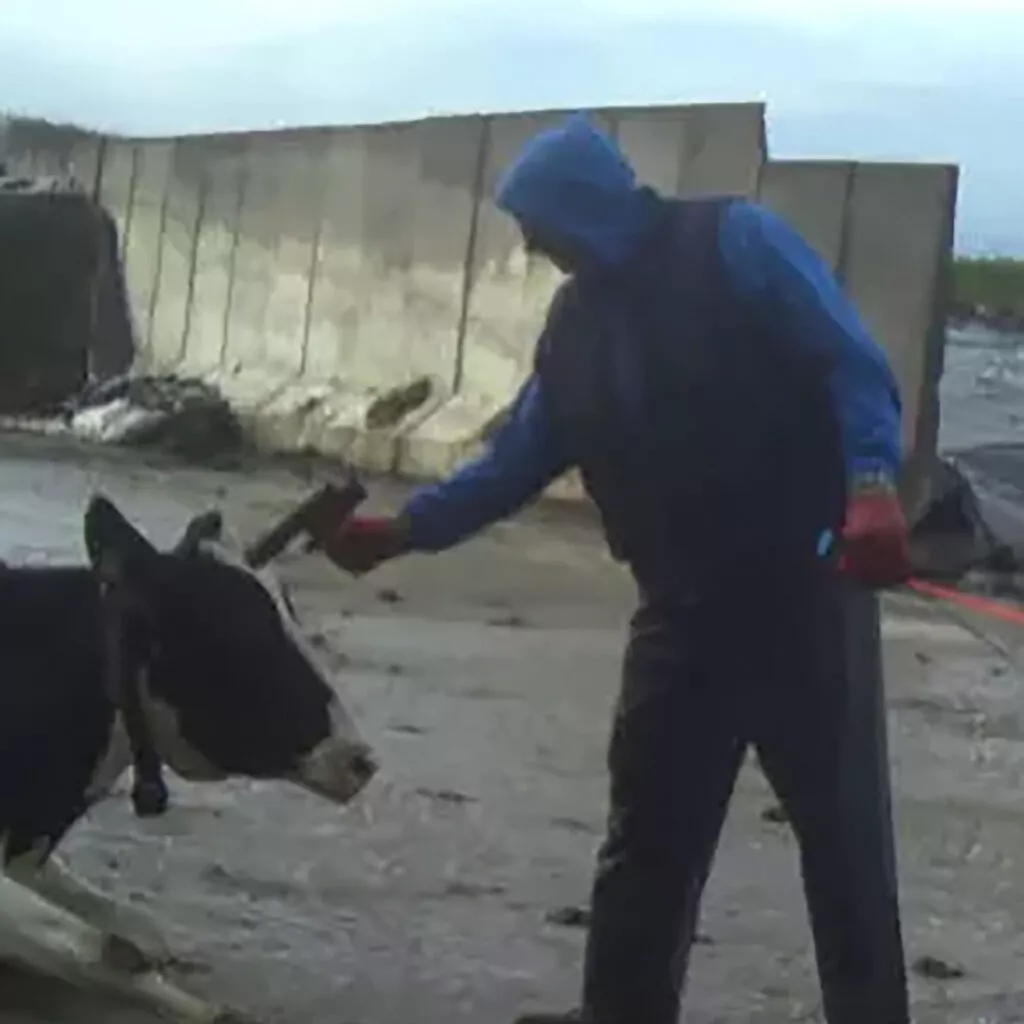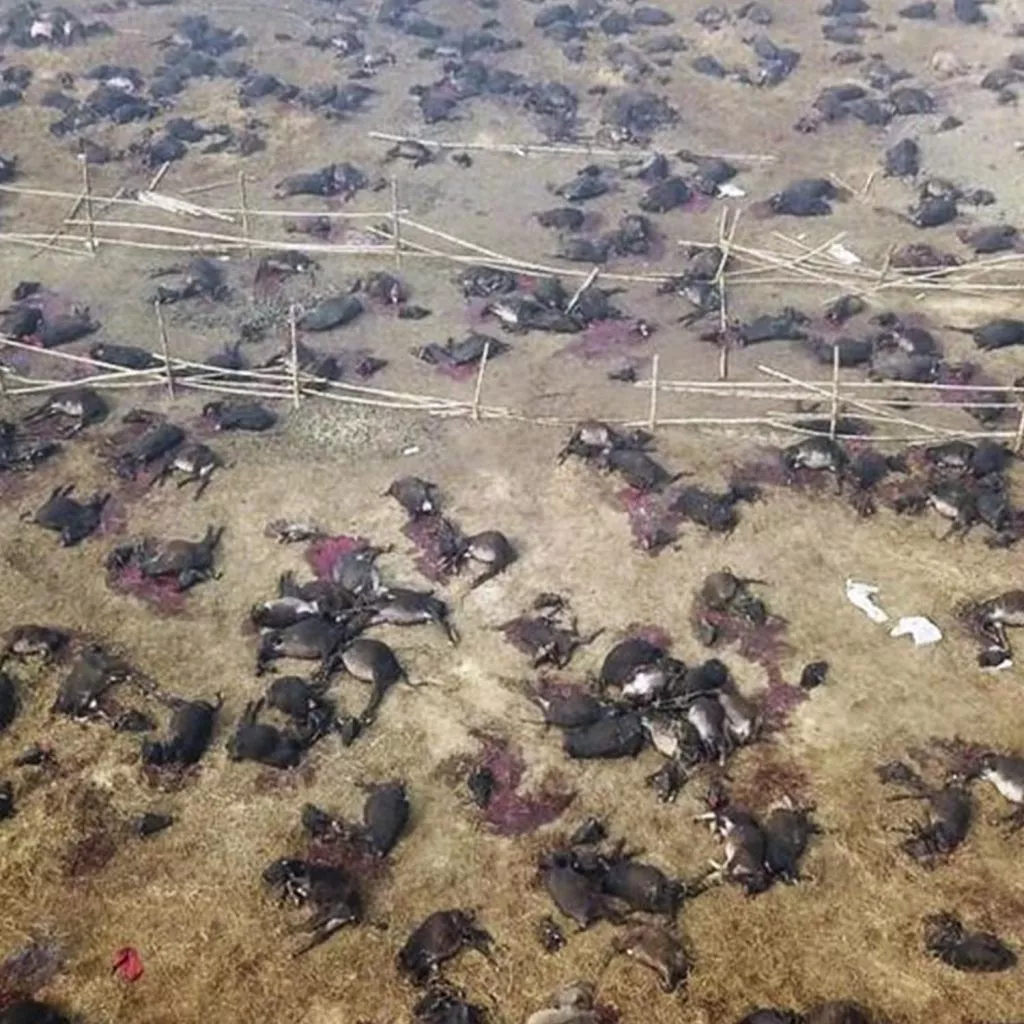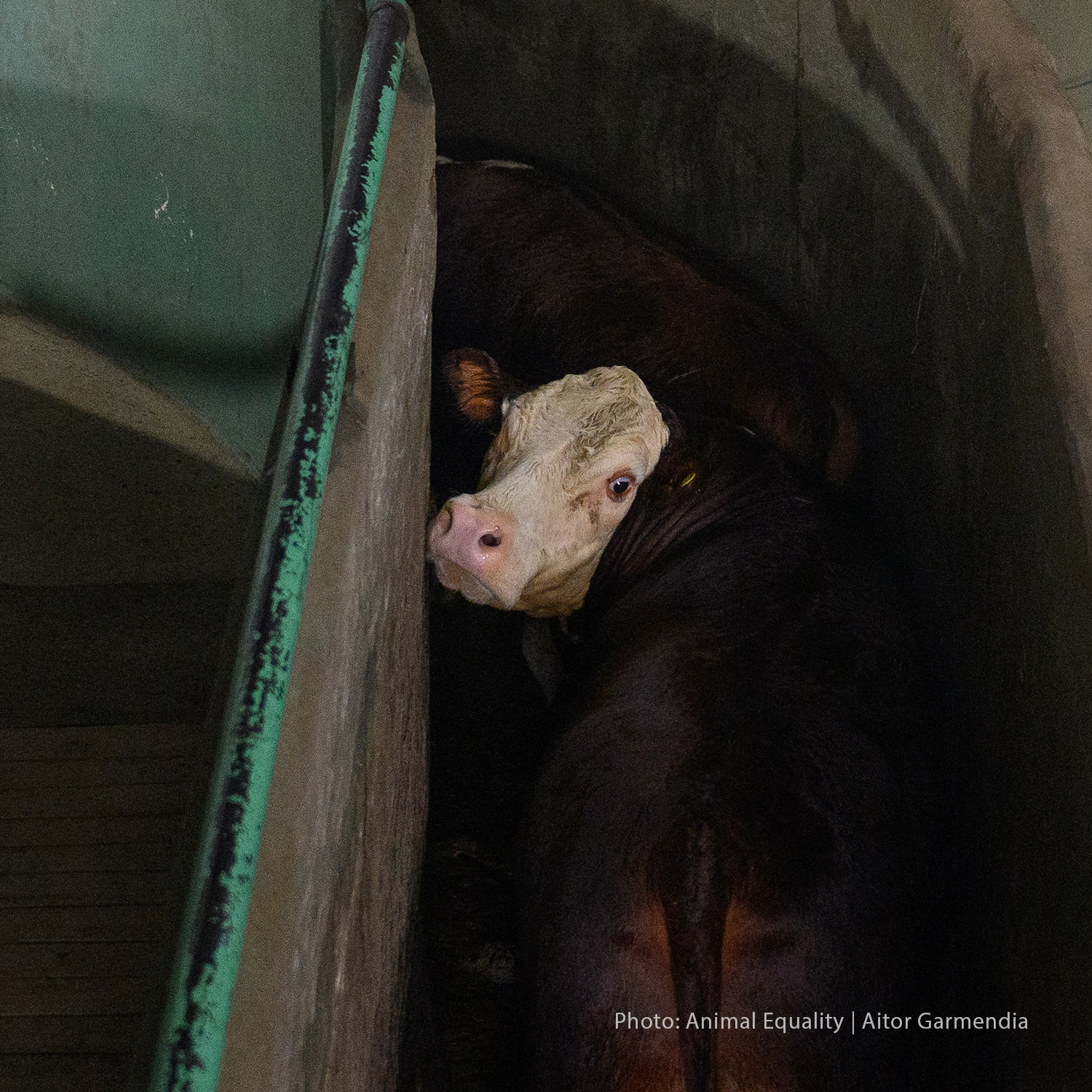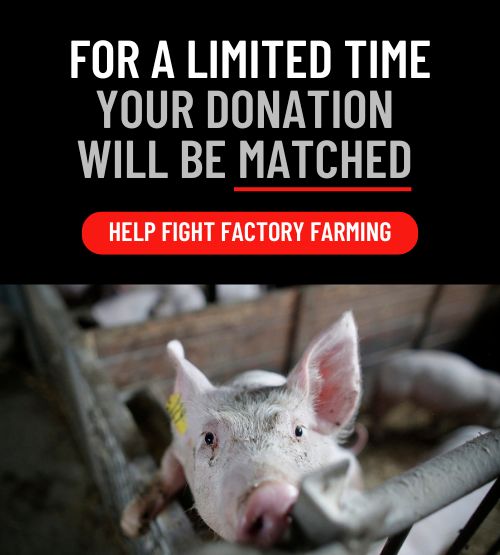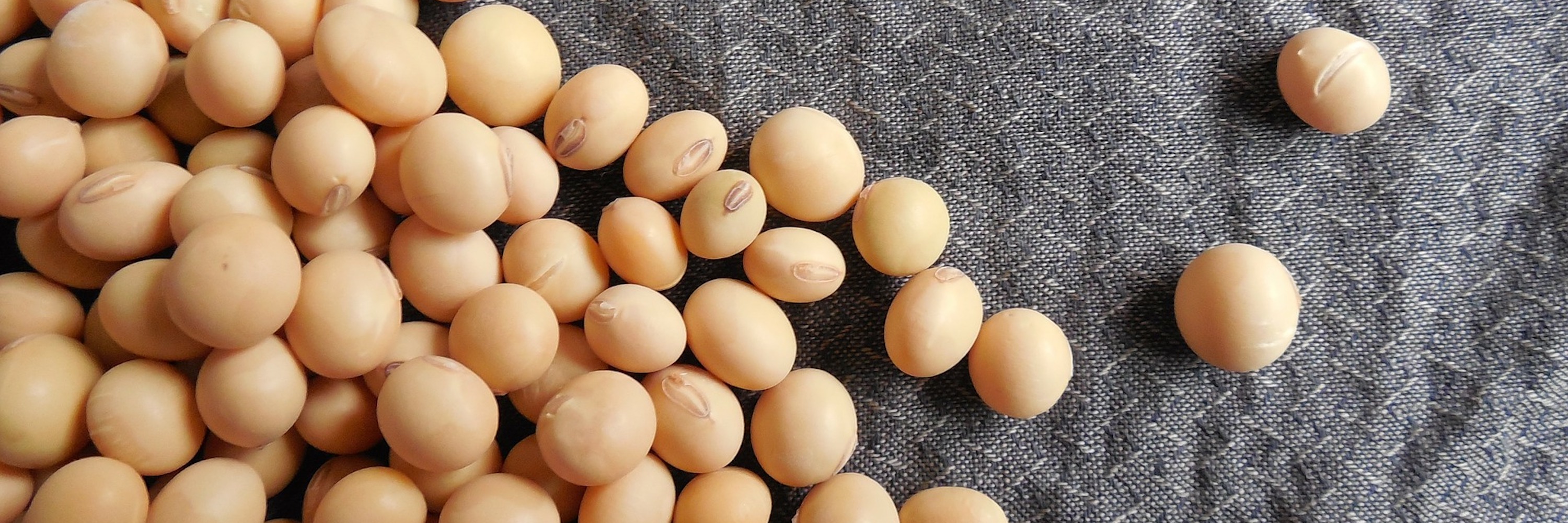
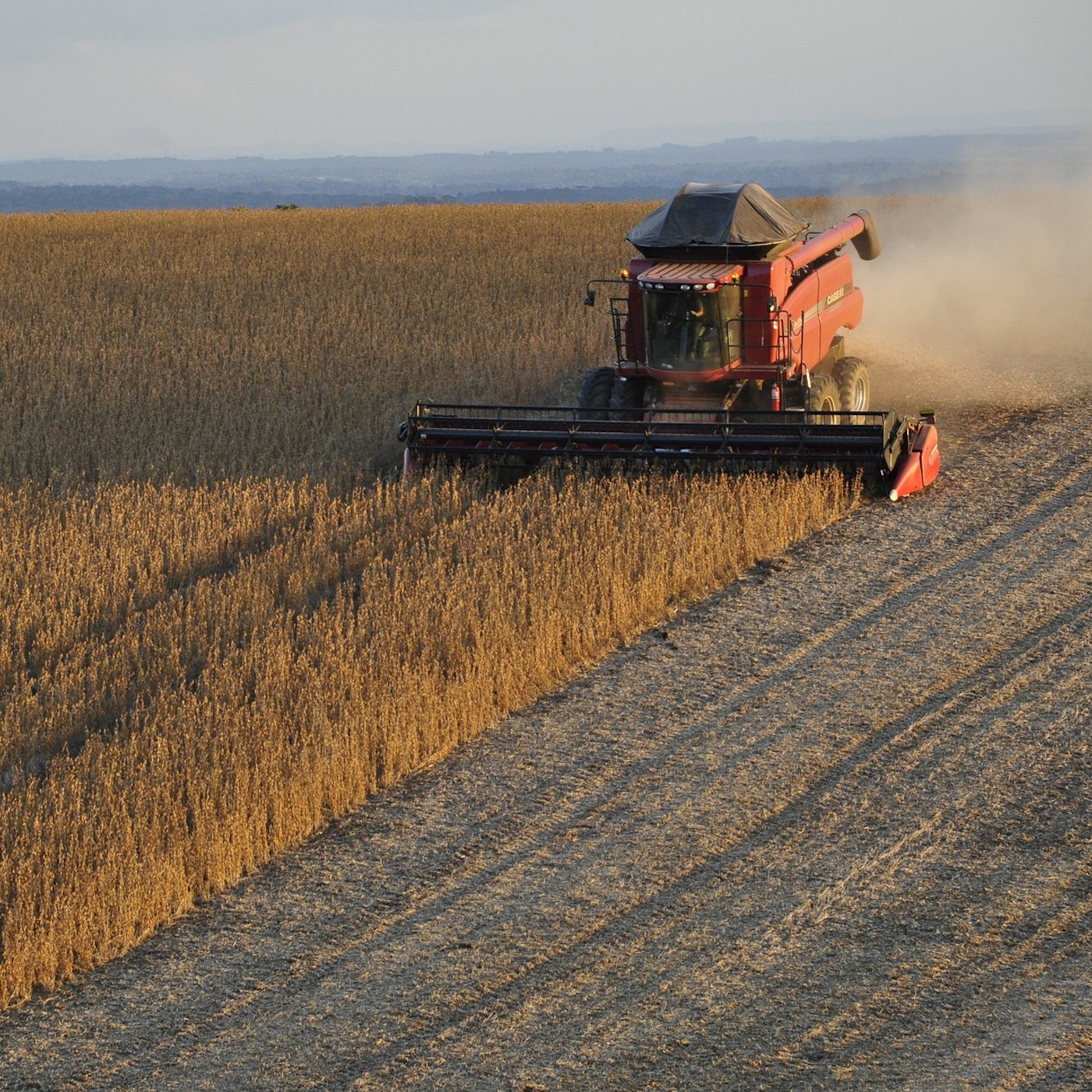
Soy and Deforestation: Everything You Need to Know
What is soy?
Produced from a species of legume originating in East Asia, items like soy milk, soy sauce, tofu, tempeh, miso, and edamame can easily be found on today’s grocery store shelves.
Soy production has increased by more than 13 times in the past 50 years, now reaching 350 million tonnes per year globally. This weight is the equivalent of 2.3 million blue whales.
This soy production boom has increased the demand for crop land, often at the expense of our planet. But who is really consuming all this soy?
We’re so glad you asked!
Where does soy come from?
The biggest soy producer worldwide is Brazil, accounting for approximately one-third of its production. Brazil’s output has grown exponentially during the past three decades.
But why? Are tofu lovers and soy milk drinkers to blame, or is the answer much more sinister?
The truth is that 77% of soy is used as feed for farmed animals, while only 7% is used for products like tofu and soy milk.
According to an analysis published by the University of Oxford’s Food Climate Research Network, 37% of global soy is processed into feed for farmed birds – such as chickens and hens – while 20% is reserved for pigs, 6% is fed to fish, and 2% is produced for cows.
And the other 16%?
It’s used to produce soybean oil, biofuel, and other industrial products.
With meat production more than tripling over the past 50 years, it is not surprising that soy production has increased to feed the billions of animals we consume.
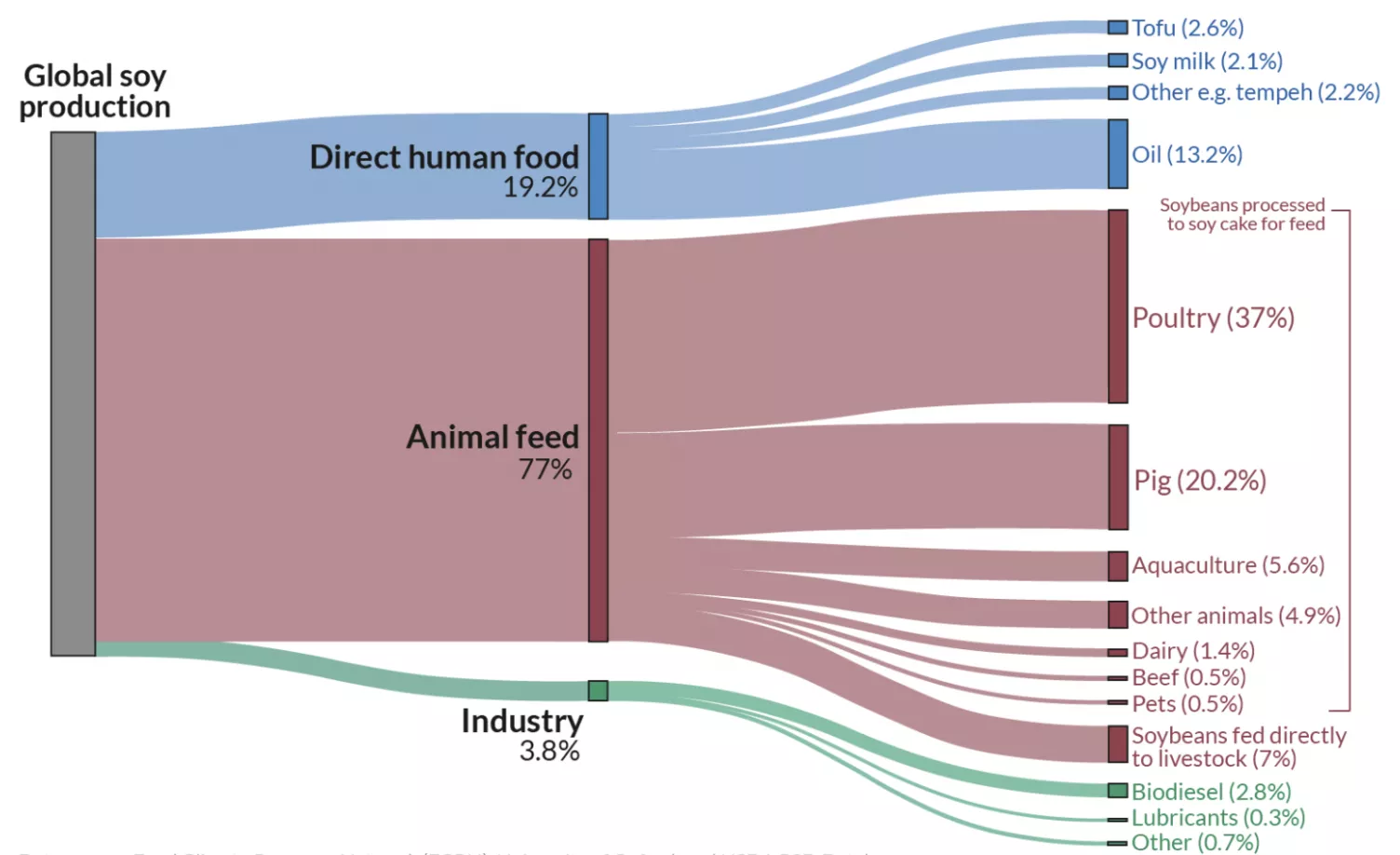
Is soy bad for the environment?
Brazil is home to some of the most threatened ecosystems. To date, we have lost more than 20% of the Amazon rainforest, 25% of the Pantanal (the world’s most extensive continuous wetland) and 50% of the Cerrado (the world’s most diverse savannah) to deforestation.
For the first time ever, the Amazon is even producing more carbon dioxide than it can absorb.
But soy production used for animal feed is not the only cause of deforestation in Brazil.
According to a study published by Science Advances, the main driver of deforestation is, in fact, the expansion of pasture for cows raised for meat.
Between clearing land for grazing cows and planting soy to feed them, animal agriculture is now responsible for more than 80% of deforestation in Brazil. Animal Equality’s investigation into the Brazilian Pantanal shows how farmers illegally spark forest fires to clear land for cows. With a general lack of oversight, the animal agriculture industry is quite literally watching our rainforests burn.

So, we’ve found the culprit. Now what?
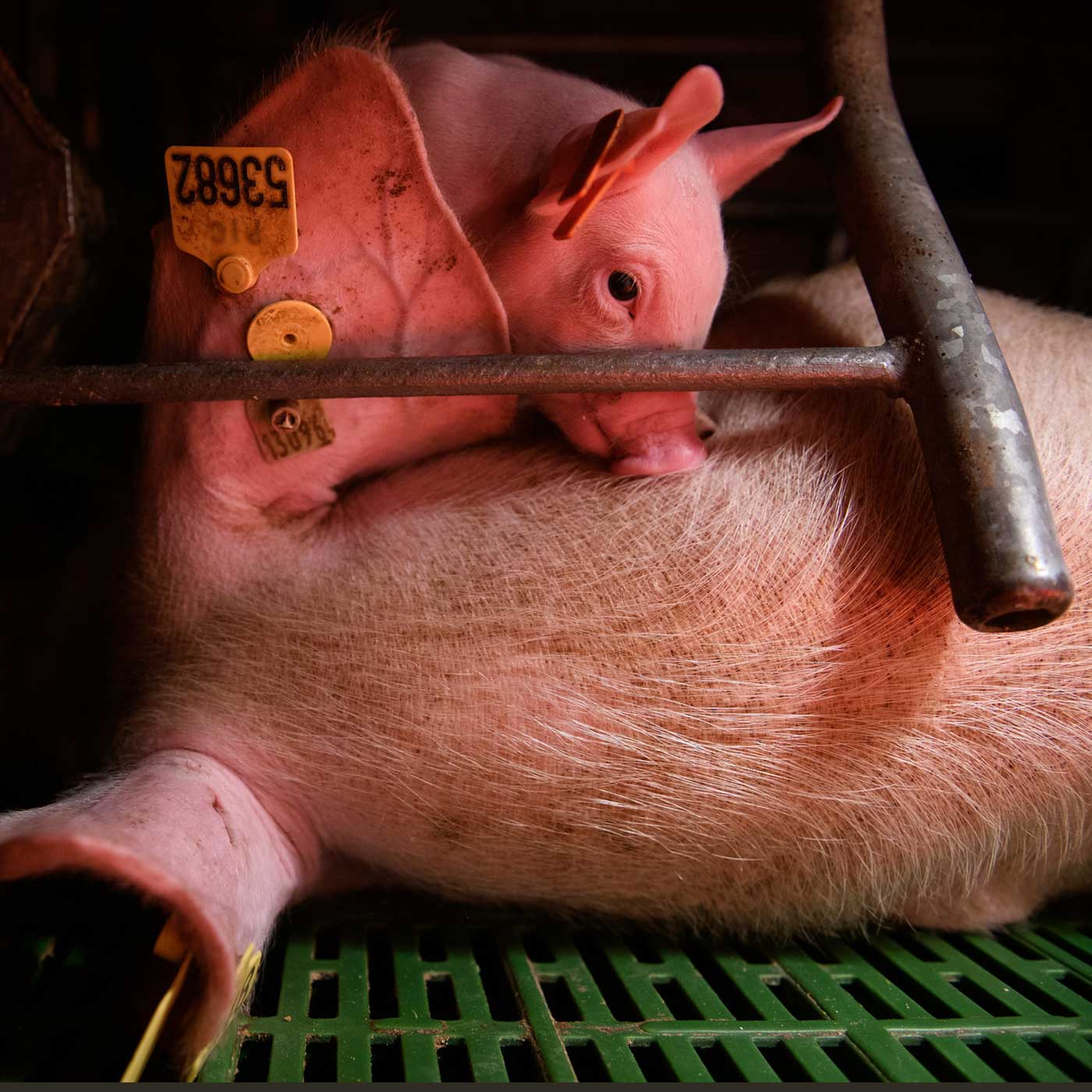
WILL YOU STEP UP FOR HER?
Her mother’s life was spent in a cage. She will suffer the same fate. But you can change this for millions of animals, currently trapped in factory farms.
Your support makes our investigations, campaigns, and legal work possible .
Only $25/month impacts 1,300 animals in a year.
The good news is that consumers are taking matters into their own hands and replacing meat, dairy, and eggs with delicious, satisfying, and sustainable plant-based proteins.
With millions around the globe making the switch, Love Veg has compiled all the beginner’s resources one could ever need to make the transition as breezy as possible.
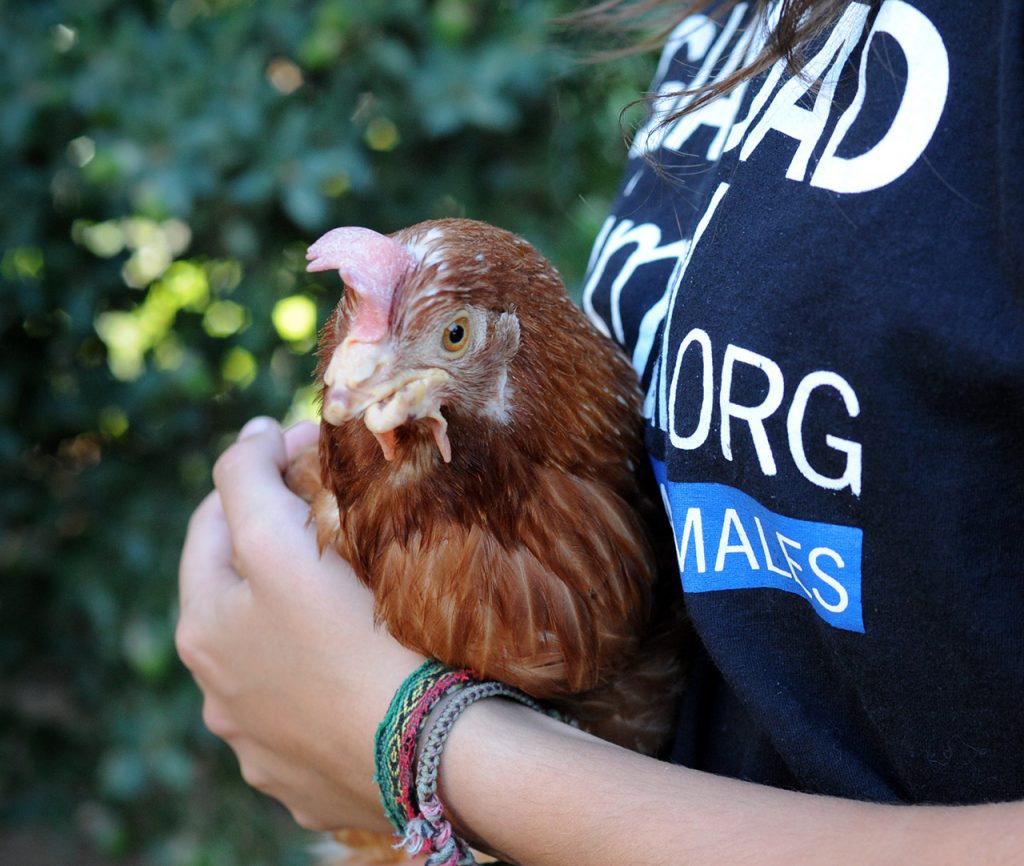
LIVE KINDLY
With rich emotional lives and unbreakable family bonds, farmed animals deserve to be protected.
You can build a kinder world by replacing animal food products with plant‑based ones.
Recommended
